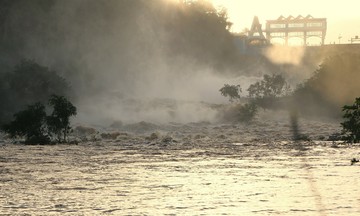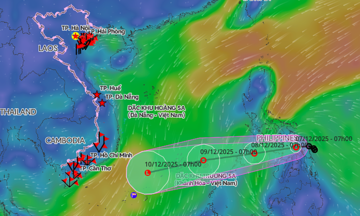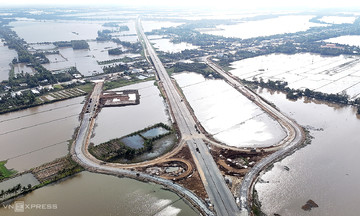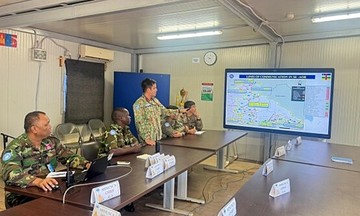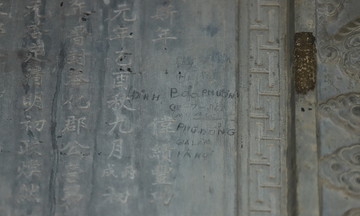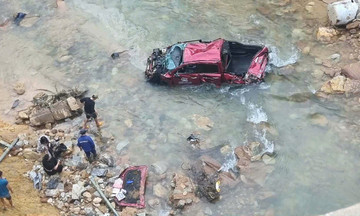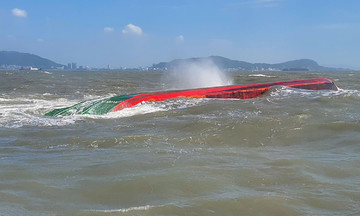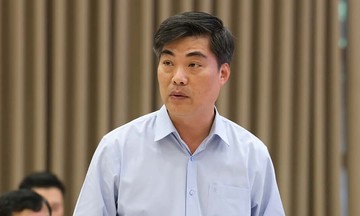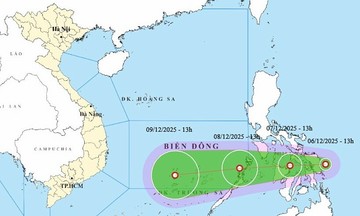Prime Minister Pham Minh Chinh, accompanied by Minister of National Defense Phan Van Giang, departed for the flood-hit Thai Nguyen region immediately after the conclusion of the 13th Central Committee Meeting that same morning.
In Phan Dinh Phung ward, which is severely flooded, the Prime Minister extended condolences to families who lost loved ones and shared in the difficulties and losses of flood-affected residents. He also commended the rescue forces, soldiers, police, and local militia for their efforts over many days.
The government leader stated that he deeply understands and shares the losses of people in disaster-stricken areas. He affirmed that the government is urgently implementing essential solutions to overcome the consequences of the storm and floods, aiming to stabilize residents' lives soon. He requested ministries and agencies to coordinate with local authorities to accelerate recovery efforts, ensuring residents' daily lives and safety as soon as possible.
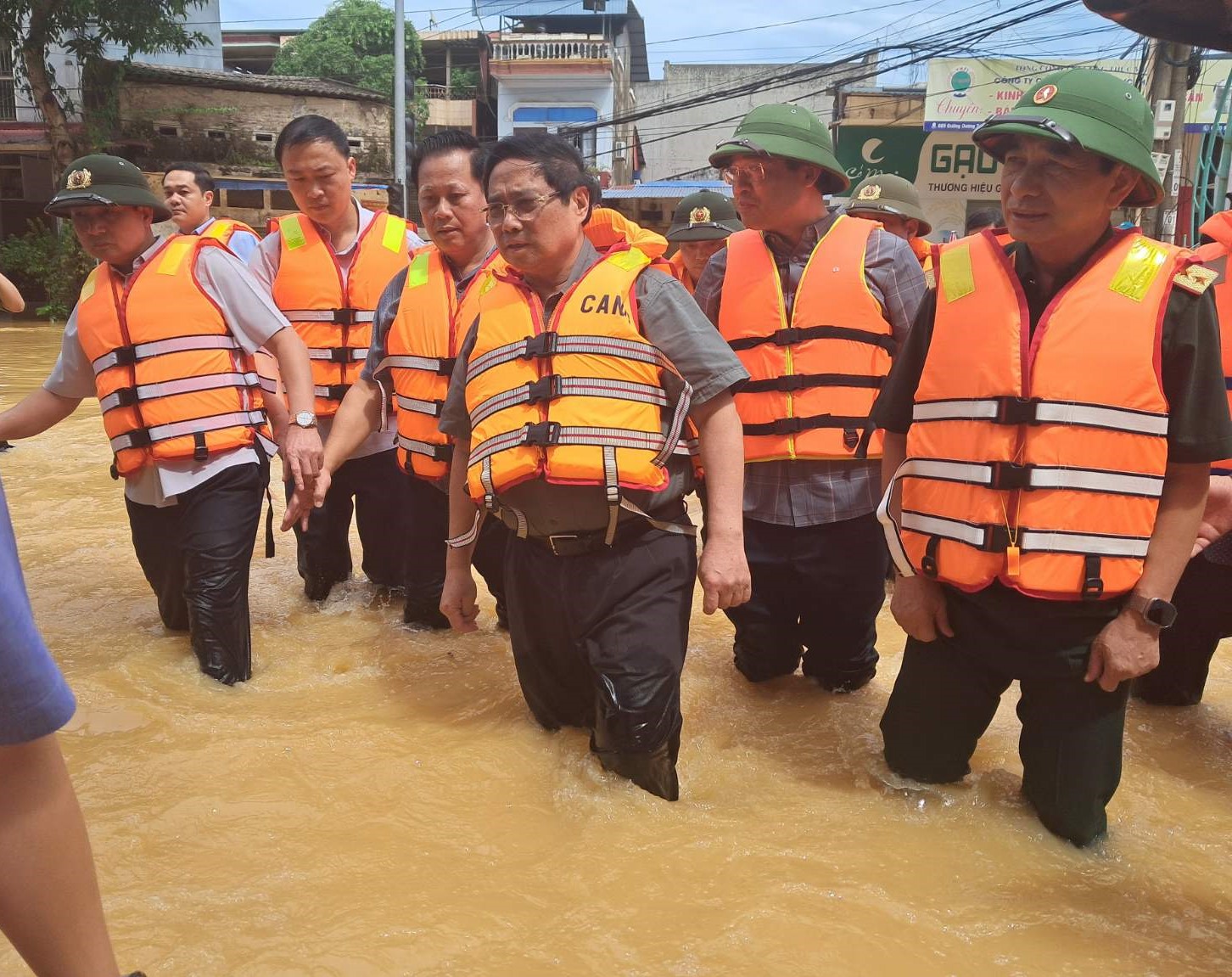 |
Prime Minister Pham Minh Chinh and Minister of National Defense Phan Van Giang inspect the flood-hit Thai Nguyen region on the afternoon of 8/10. Photo: VGP |
The Prime Minister directed local authorities and functional forces to review severely flooded areas and areas at risk of landslides, flash floods, and debris flows to proactively evacuate residents, especially the elderly, children, and vulnerable groups, from dangerous zones. He emphasized that "the safety of people's lives is paramount."
Forces were assigned to focus on protecting dikes and ensuring the safety of dikes, rivers, and dams, mobilizing maximum personnel, vehicles, and supplies to address incidents from the very beginning. "We must use all means to access deeply flooded and isolated areas, provide food aid to households at risk of hunger, and absolutely ensure no one goes hungry or thirsty," the Prime Minister stated. He called on residents to unite and support each other to overcome this hardship and stabilize their lives soon.
The Prime Minister announced that he would direct ministries, agencies, and localities to research upgrading and reinforcing key infrastructure, including the Cau River dike system, to increase resilience to natural disasters and protect the lives and property of residents.
Earlier that morning, the government leader decided to provide urgent support of 140 billion VND to four provinces severely affected by the storm and floods: Thai Nguyen received 50 billion VND, while Cao Bang, Lang Son, and Bac Ninh each received 30 billion VND.
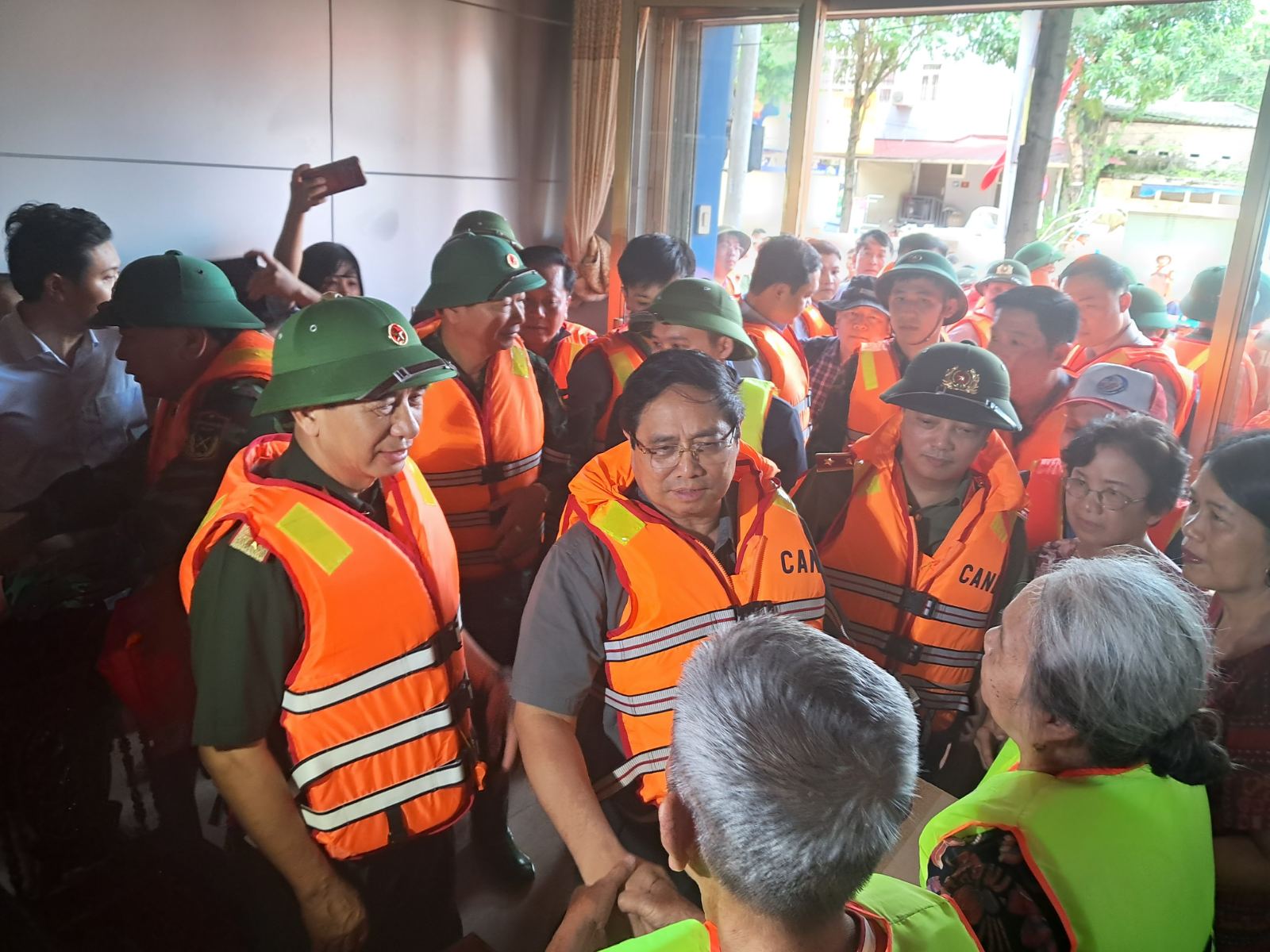 |
Prime Minister Pham Minh Chinh and Minister of National Defense Phan Van Giang visit flood-affected residents in Thai Nguyen. Photo: VGP |
On the night of 7/10 and morning of 8/10, the Northern region continued to experience heavy rainfall. Rainfall from 19h yesterday to 3h this morning reached 90 mm in Xuan Minh 2 (Tuyen Quang), 73 mm in Muong Lai (Lao Cai), and 75 mm in Dong Tam (Phu Tho).
Due to prolonged rain, water levels in rivers rose rapidly. At 1h, the water level of the Cau River at Gia Bay station (Thai Nguyen) was 29,9 m – 0,64 m higher than yesterday evening, exceeding the historical flood peak of 2024 by 1,09 m. Water levels on the Thuong River at Cau Son and Phu Lang Thuong both surpassed alarm level three; the Luc Nam River was at alarm level two; and the Thai Binh River was below alarm level two.
Rising water submerged most wards and communes of Thai Nguyen City; in many areas, water reached the second floor, forcing residents onto rooftops or balconies to await rescue. As of the morning of 8/10, the floods had caused 4 deaths, 2 missing persons, and inundated over 5,000 houses, with 490 houses submerged up to their roofs requiring urgent evacuation.
The floods also caused widespread power outages and threatened a 2,15 km long dike running through the city center. Authorities, along with soldiers, militia, and residents, quickly built an anti-overflow dike, with the highest section exceeding one meter and stretching 550 m.
Vu Tuan




